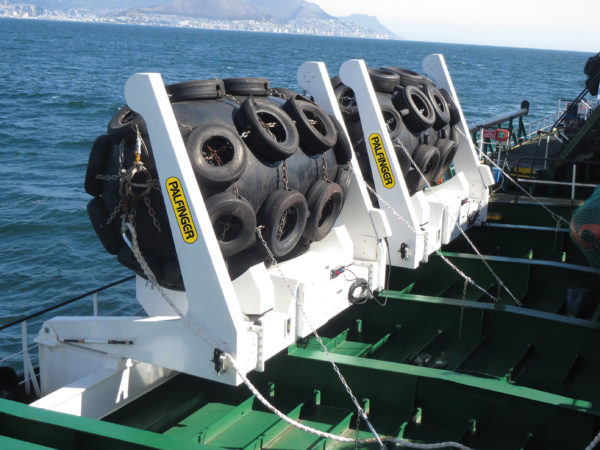Last Updated on February 16, 2022 by PALFINGER
PALFINGER delivered a fender package to the world’s first purpose-built LNG bunkering vessel. What was once a niche market is swiftly developing into an excellent business opportunity. Here comes why.
Ships powered by liquefied natural gas (LNG) are becoming increasingly popular. Last year, approximately 11 percent of all newbuild contracts were for LNG-powered vessels. Driven by the desire for cleaner burning alternative fuels, this trend is expected to persist and grow. Another reason for the rising demand is that the LNG bunkering infrastructure is maturing.
WE ARE THE ONLY COMPANY THAT MANUFACTURES BOTH FENDERS AND FENDER DAVITS IN-HOUSE.
While other fender suppliers are forced to rely on partners in terms of davit production, they are part of PALFINGER’s product portfolio. This is indeed a competitive advantage. The more LNG-powered ships there are, the more bunkering vessels are required. Just to explain: the latter store the LNG and deliver it to other ships for refuelling purposes. Seeing that the fuel transfer is a ship-to-ship operation, the majority of bunkering vessels are designed to have fenders and fender davits on board.

PALFINGER fender davits: NFD2500H-2035
FROM NICHE TO OPPORTUNITY
So far, fender davits have been niche products. In the past, they were ordered for some tankers or FPSOs (Floating Production Storage and Offloading Units). Generally speaking, fender davits are not required by vessels that travel from port to port, such as cruise ships, car ferries, and container ships. After all, ports have their own fenders installed. And yes – just in case you’re wondering – our fenders can be found in many harbours around the globe.
The fenders of choice are normally pneumatic rubber fenders, in accordance with the ISO 17357-1:2014 standard. These fenders are custom-made for heavy duty offshore and ship-to-ship operations, and subject to proper maintenance they will endure 15 years or more. The main advantage of our PALFINGER fender davits is that they boast a fully enclosed design, which means that all components, such as wiring and hydraulics, are protected from wind and weather. Apart from lower maintenance costs, their “plug and play” system ensures easy installation and allows the fenders to be deployed and retrieved via remote control whenever needed. This creates a safer working environment for the crew on board. It therefore comes as no surprise that PALFINGER had the honour of supplying a fender package to the Engie Zeebrugge, the world’s very first purpose-built LNG bunkering vessel. The Engie Zeebrugge was equipped with four NFD2500H fender Davits and four NPF2540C pneumatic fenders.
NEW GROWTH SEGMENTS
The LNG bunkering segment is, however, not the only area that promises growth for the PALFINGER Fender Division. Our products are also very attractive to the FSRU (Floating Storage Regasification Unit) market. Rather than storing fenders in the water permanently or having to rely on local suppliers towing the equipment to the site, FSRUs can opt for storing fenders on board and deploy them via davits whenever required. This also applies to other Floating production and storage units, such as FLNGs (Floating Liquid Natural Gas Facilities) and FSOs (Floating Storage and Offloading Units). Fender davits are definitely the safest and most efficient way of handling large fenders for ship-to-ship operations. PALFINGER is proud to be contributing to the LNG trend and all technological advances it may bring in the future.
